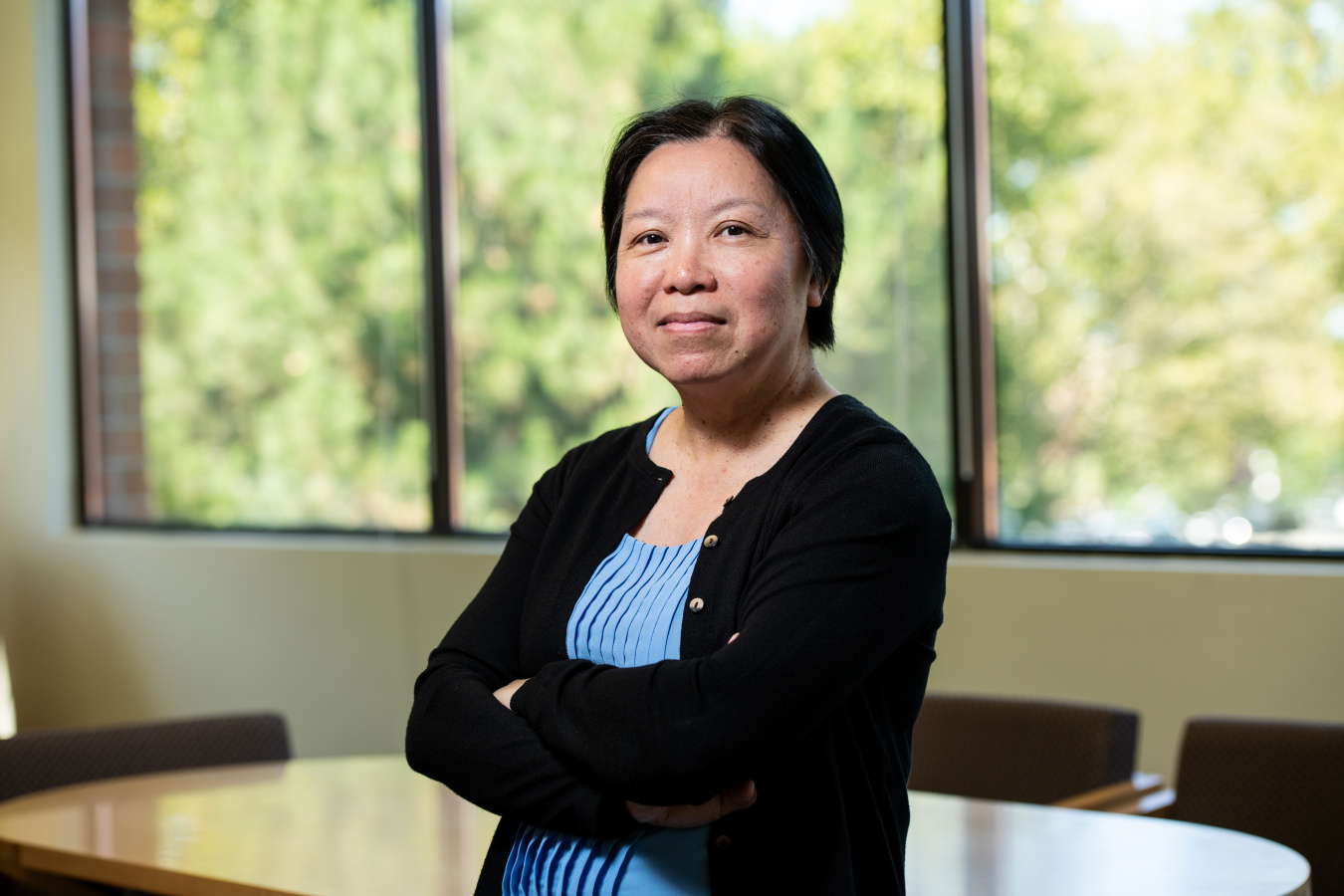Learn why Dr. Ruby Leung loves her job as a Battelle fellow at Pacific Northwest National Lab.
September 11, 2019
As a Battelle fellow at Pacific Northwest National Laboratory and an affiliate scientist at the National Center for Atmospheric Research, Dr. L. Ruby Leung models and analyzes the climate and the movement, distribution, and quantity of water in its various phases on the Earth. Her research includes using numerical models and observation data to probe how extreme events such as floods, droughts, thunderstorms, and hurricanes might change in a warmer climate accompanied by more moisture in the atmosphere. Her research has been featured in Science, Popular Science, The Wall Street Journal, National Public Radio, and many major newspapers. She holds a PhD and MS in atmospheric science from Texas A&M and a BS in physics and statistics at the Chinese University of Hong Kong.
What inspired you to work in STEM?
Since I was young, I found it fascinating that scientific theories could explain the physical world. For example, Newton’s law explains so many observable phenomena familiar to us in our daily lives. I wanted to discover new theories or find ways that I could use existing theories to benefit people and the environment. I find that very inspiring.
What excites you about your work at the Energy Department?
My work is Earth system modeling. We use numerical models to understand and probe Earth system processes to understand how these processes might be influenced by human activities and how they might change in the future. As we gain more understanding, we identify gaps in how well our models compare with reality. Finding ways to improve models is very challenging but developing better models can be very rewarding. I also like to perform numerical experiments using our models to test different ideas. We can run our models on computers in different settings to test hypotheses or explain phenomena that haven’t been explained before. For example, numerical experiments can help us make sense of the observed changes in temperature and precipitation in the historical record. Although most of my research is about Earth system modeling using computers, I also had the opportunity to lead a field campaign and fly on a research aircraft to collect measurement data to improve our models. Working at a Department of Energy national lab is exciting because I have a lot of freedom to define the science questions we want to explore and access to many tools like supercomputers and instruments that we can use to answer our questions.
How can our country engage more women, girls, and other underrepresented groups in STEM?
It’s important for young women to have a role model to look up to in the scientific community. When they see scientists who are just like them, they are more likely to think they could do something similar. We can also do more to expose them to interesting science questions and problems. Questions can be curiosity driven or have societal relevance, so seeing both options can help them find their reason to enter STEM. It also helps to have them meet scientists in their work environment. There’s power in knowing what scientists actually do.
Do you have tips you'd recommend for someone looking to enter your field of work?
You need to have an open mind. Generally, people learn something before they enter a certain field and their training might bring them to a particular problem or question or tool. However, keeping an open mind after that will open doors and help you ask new questions or see new ways to address your research question. With an open mind, you will find yourself in an exciting environment ready to connect to different ideas.
When you have free time, what are your hobbies?
Cooking and travel. I like cooking because it’s almost like doing an experiment. I can try to follow recipes to produce a dish that I like, similar to scientists learning from the giants before us, or I can make new dishes, which is more like exploring new ideas and theories. I also like to travel and visit museums. Learning about different cultures and history gives me insight into the world and people around us.
Learn more about our programs & resources for women and girls in STEM at http://www.energy.gov/women

